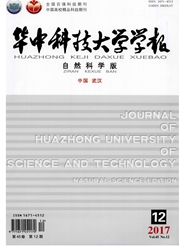

 中文摘要:
中文摘要:
通过足尺锈蚀钢筋混凝土构件低周反复荷载试验,验证有限元模型的准确性和可靠性,采用精细化有限元方法,从混凝土碳化率和钢筋锈蚀率的角度,考虑混凝土碳化、钢筋锈蚀及其引起的黏结滑移性能退化等多因素耦合作用,研究近海大气环境下使用年限内,耐久性退化对构件抗震性能的影响规律和内在机理.研究结果表明:近海大气环境下,钢筋混凝土构件使用年限在30a内抗震性能变化不大;当使用年限超过30a时,抗震性能显著退化;当使用100a时,承载力降低41.5%,刚度约退化48.9%,延性降低45.5%,耗能能力降低49.6%.建议在对近海大气环境钢筋混凝土构件抗震设计时应考虑随使用年限的增长、耐久性退化对抗震性能的影响,从而保证结构良好的抗震性能.
 英文摘要:
英文摘要:
Based on anti‐seismic property test of corroded full scale reinforced concrete members ,the accuracy and reliability of finite element model was proved ,and the multi‐factor combined effects were considered ,such as concrete carbonation ,reinforcement corrosion and bond‐slip performance degradation .Refined finite element model w as established to investigate the seismic performance evolution law of durability deteriorated reinforced concrete member in common atmosphere environment from corrosion rate of reinforcement and carbonation rate of concrete perspective .It can be revealed that w hen service life is less than 30 a ,the seismic performance of reinforced concrete member show s little change ,but after 30 a ,it degrades significantly .On the other hand ,when service life reaches 100 a , bearing capacity decreases by 41 .5% ,stiffness decreases by 48 .9% ,ductility decreases by 45 .5% , and energy dissipation decreases by 49 .6% .So the seismic performance evolution law of reinforced concrete member in offshore atmosphere environment should be considered in aseismic design to guar‐antee earthquake‐resistance capability of structures .
 同期刊论文项目
同期刊论文项目
 同项目期刊论文
同项目期刊论文
 期刊信息
期刊信息
